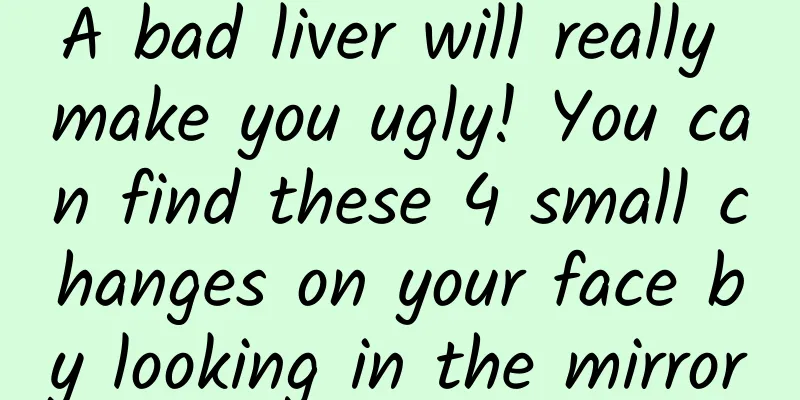Which day of menstruation is the dangerous period?

|
Many women are very concerned about an issue, especially young women who do not have much life experience, which is which day of the menstrual period is the dangerous period. Many women need the nourishment of sex, but many people do not have sufficient knowledge of contraception, and often get pregnant when they do not plan to have children. This is a very troublesome thing. Today I will talk to you about the issue of which day of the menstrual period is the dangerous period. "Safe period" and "dangerous period" refer to the time interval during the menstrual cycle when the egg meets the sperm to become a fertilized egg and conception. This is called the "dangerous period", and the opposite is called the "safe period". Since the egg can be fertilized within two or three days after being released, and the sperm can survive for three or four days after being released and can enter the egg, if the ovulation day (usually 14 days before menstruation) is taken as the base, the first four days and the last five days are the dangerous period, and the rest are the safe period. For example, if your period comes on the 20th, then normally your ovulation period would be on the 6th. So, having sex between the 3rd and the 10th is likely to lead to fertilization and pregnancy. Therefore, the 3rd to 10th are called the "dangerous period"; the rest of the time is the "safe period". However, since it is difficult for most people to grasp the exact date of ovulation (in fact, the body temperature on the day of ovulation is higher than usual, the viscosity of vaginal mucus increases, etc.), most people calculate the "safe period" based on the menstrual period, with the 7 days before menstruation and the 5 days after menstruation as the "safe period". If you have your period on the 20th and it's over on the 24th, then from the 13th of this month to the 3rd of next month... "Safe period" and "dangerous period" refer to the time interval during the menstrual cycle when the egg meets the sperm to become a fertilized egg and conception. Since the egg can be fertilized within two or three days after being released, and the sperm can survive for three or four days after being released and can enter the egg, if the ovulation day (usually 14 days before menstruation) is taken as the base, the first four days and the last five days are the dangerous period, and the rest are the safe period. For example, if your period comes on the 20th, then normally your ovulation period would be on the 6th. So, having sex between the 3rd and the 10th is likely to lead to fertilization and pregnancy. Therefore, the 3rd to 10th are called the "dangerous period"; the rest of the time is the "safe period". However, since it is difficult for most people to grasp the exact date of ovulation (in fact, the body temperature on the day of ovulation is higher than usual, the viscosity of vaginal mucus increases, etc.), most people calculate the "safe period" based on the menstrual period, with the 7 days before menstruation and the 5 days after menstruation as the "safe period". If you have your period on the 20th and are clean on the 24th, then the "safe period" is from the 13th of this month to the 3rd of next month. The 7 days before menstruation and 8 days after menstruation are the safe period and the rest are the dangerous period. It can only be used as a reference and is not absolute. If the three days before and after menstruation are normal, it will come every month... The ovulation period is almost around the middle of the menstrual period! That is the most dangerous time! It is difficult to say which day after the end of the menstrual period, because many people's periods are different, some are three days, some are five days. However, you can use this method to calculate: add 14 days to the first day of your period. The days before and after this day are all dangerous periods. For example, if your first day is 1, 1+14=15, then the days before and after the 15th are dangerous. Usually it's the first four days and the last four days. That is to say, we should pay more attention during the period from the 11th to the 19th. I believe that everyone has a clearer understanding through this article. Many people will have sex during the safe period for contraception, so that they can fully enjoy the pleasure of sex. However, in the past, people did not have enough understanding of the safe period and the dangerous period, so they often made big mistakes. Especially female friends, everyone must pay attention to the grasp of this time, because many men do not pay much attention to this, so you must understand which day of the menstrual period is the dangerous period and take care of yourself. |
<<: Can uterine fibroids be treated with the drug Guizhi Fuling?
>>: What are the symptoms of the first week of pregnancy?
Recommend
How many days did the bleeding stop after taking the medicine?
If a woman has a miscarriage, whether it is a nat...
How to clean the vulva correctly?
The importance of the vulva to women is self-evid...
Pain in lower right abdomen during 2 months of pregnancy
Women need extra care for their bodies during pre...
How to recover after caesarean section
Many women will find that their bodies have compl...
How many years can you live after breast cancer surgery?
For most female friends, the most common diseases...
"Blood battle" to the end: first aid and treatment of upper gastrointestinal bleeding
Author: Zhang Huijun, The Fifth Medical Center, P...
Treatment of nonspecific urethritis and gonococcal urethritis
Nonspecific urethritis and gonococcal urethritis ...
Is it better to blanch braised pork or not? Why should braised pork be blanched first?
Braised pork in brown sauce is a popular delicacy...
Can I wash my hair when I have my period?
We all know that girls love to wash their hair in...
Dietary considerations for ovarian cysts, women must know
The ovaries are the most important part of a woma...
What can I eat to make my breasts bigger?
Every girl hopes to have an S-shaped body, beauti...
Will a girl grow taller after her menarche?
Girls often face some distress when they have the...
Anesthesia: The invisible force that protects life safety
Author: Wu Ping, Jingmen Central Hospital, Hubei ...
Are there any tips for treating blackheads?
The problem of blackheads on the facial skin is p...









